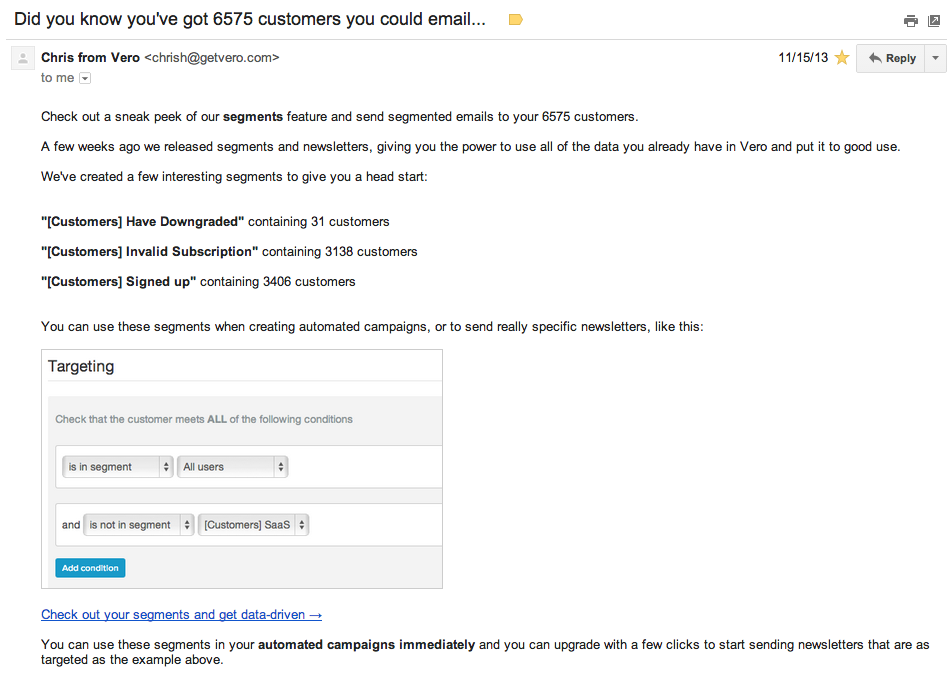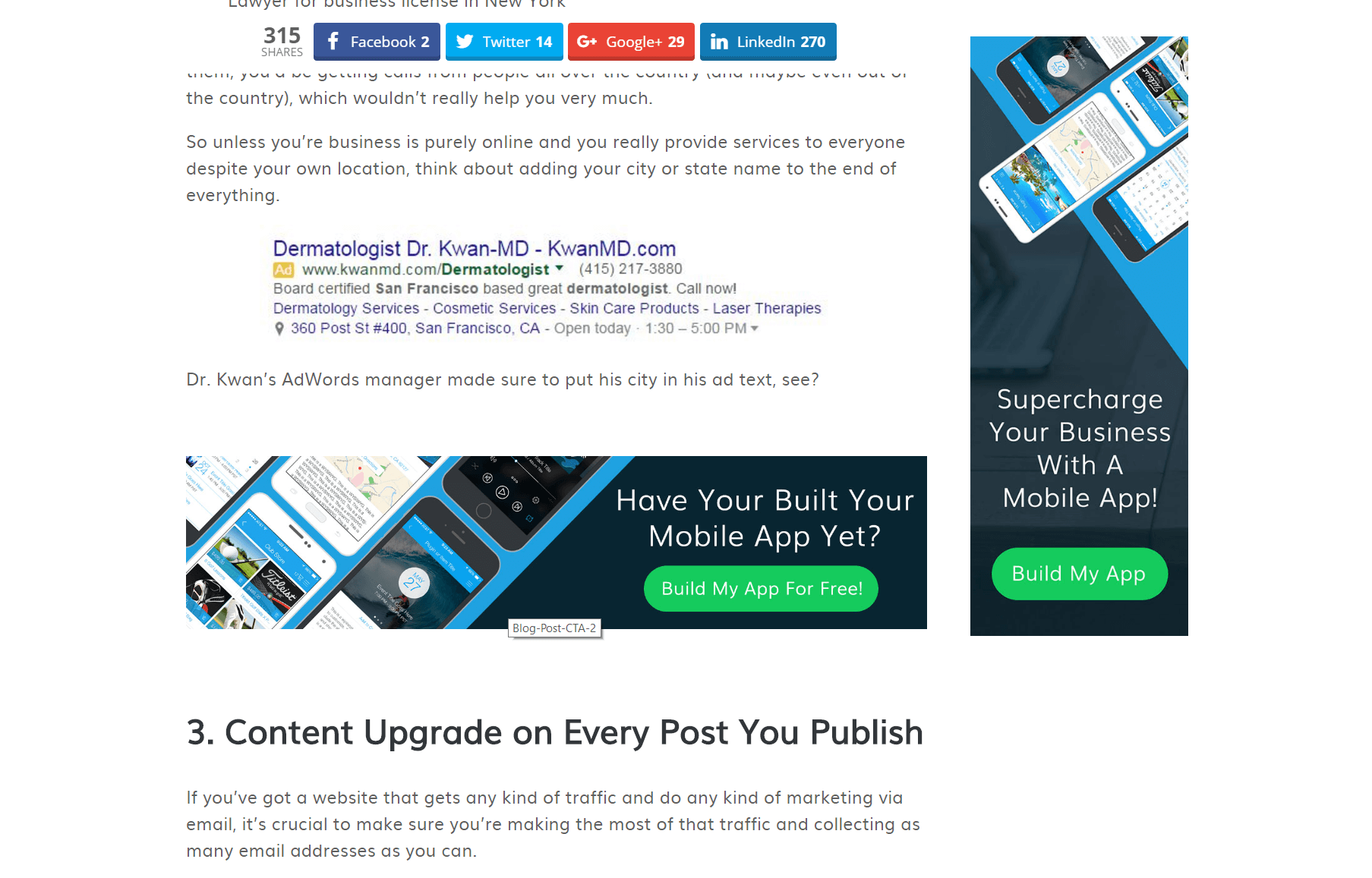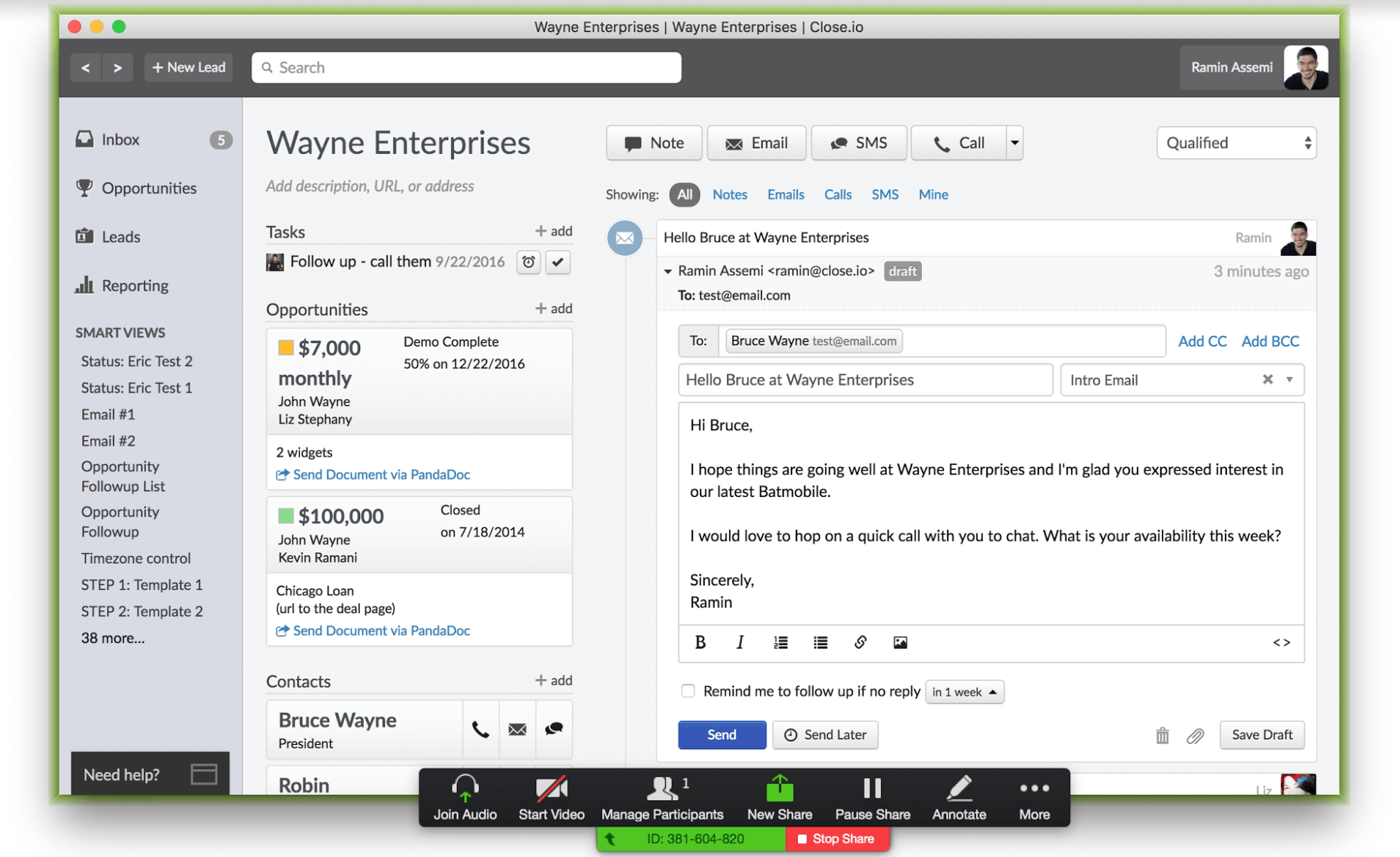We tend to make a big deal about leads in the marketing space, and not without good reason. Everything starts with leads.
However, for software companies, the real goal is product adoption. We need people actively and consistently using our product. Regardless of our business model, success occurs when users experience that “aha” moment that takes our product from an experiment to a core part of their day-to-day work.
So how do we move people from lead to product adopter? How to we give them that “aha” moment?
Two words: Strategic Repetition
Repetition is a POWERFUL psychological force. Studies have shown that simply repeating key points within a conversation is enough to significantly influence a person’s decision-making.
When strategic repetition is utilized across multiple digital channels, it can substantially accelerate the rate at which leads become product adopters.
Today, we’re going to look at seven ways you can accelerate product adoption WITHOUT spamming your user base. Following any one of these techniques will help, but combining them all together will give you the largest benefit.
Let’s get started.
1. Create In-Product Tips and Walkthroughs
While creating an intuitive interface is part of designing great software, it’s important that you provide extra “hand holding” for new users who want to learn your product and for existing users who want to get more value out of new features.
New users typically sign up with the goal of accomplishing something specific, but they will likely be clueless about how to accomplish whatever that is using your product. They also might be entirely unaware of other beneficial features that could easily become a part of their day-to-day work.
Creating in-product tips and visual walkthroughs will help users better understand your product and accelerate that “aha” moment that turns them into product adopters.
For example, Google utilizes this technique to announce a new feature, Sheets Explore:

Creating charts and sorting data is a common goal of Sheets users, yet many begin using the software without understanding how to accomplish these tasks. Google uses an in-app prompt for relevant users to begin a walk-through.

Google then takes the users through a brief walkthrough, demonstrating several features available to Sheets users.

While Google’s in-app communications are coded into the software, likely by their robust team of engineers, you can use a tool like Appcues to create similar functionality without needing to hard-code anything into your pages.
2. Use Segmented Email Marketing To Re-Engage Users
We all know that emails are an incredibly effective marketing tool, but what takes them from good to great is segmentation. If you can send the right emails at right moments during lead nurturing, onboarding, and product discovery, you can greatly increase conversions at each stage and overall product adoption.
Vero provides a great example of this in action. A few months after launching a big new feature as part of a pricing upgrade, the email platform wanted to upsell the new features and higher priced plans to customers who hadn’t yet jumped on the offer. They also wanted to encourage upgraded users to engage with the new features and adopt them into their weekly routines.
Instead of simply sending out a mass email to all customers, the team identified two key user segments.
The first segment was a large group of users who had joined via a discounted AppSumo promotion. These users’ plans were about to expire soon, and Vero wanted to pitch the new features in hopes of keeping them as customers
Vero sent a targeted email to these users with a custom offer designed to match the segment:

The second segment consisted of users who had access to the new features but weren’t actively using them. Vero sent these users the following email:

These emails were part of a larger segmentation process that resulted in a 450% increase in conversions for Vero’s marketing campaigns.
For your own campaigns, virtually any modern email service provider will allow you to send different emails and email autoresponders to a variety of segments. They key is tracking and understanding your audience enough to identify the important segments and then taking the time to engage with each segment in its own unique way.
3. Make Subtle Mentions In Blog Posts
Content marketing is all about providing value to your audience and helping them achieve their goals around a topic area connected to your product.
And it’s the PERFECT venue for repeatedly promoting your product in the most subtle way possible: education.
When teaching a new concept, there is the “what”, the “why”, and the “how”. The best blog posts always touch on all three of these. They tell you what you should be doing, why you should be doing it, and how to practically execute it.
That last part – the “how” – is where your product comes in.
You should regularly be publishing blog posts that teach people how to accomplish certain goals using your product.
For example, in this guide to launching a product, Ty Magnin is teaching readers how to launch a product, using HubSpot as an example. When he gets to the 3rd strategy, he subtly mentions how his own company (Appcues) can be utilized to execute on the strategy he is teaching.

This is a really easy, subtle way to promote your product without promoting your product. And most powerfully, it’s quite easy to do on big 3rd party publications, where more obvious promotion isn’t allowed.
All you have to do is teach people how to accomplish things that incorporate your product and provide an example that incorporates that product in action.
4. Experiment With Website & In-App Placement
One of the challenges in marketing is getting content in front of people on platforms you don’t control.
When it comes to your own website and app, however, you have FULL control. It’s really important that you utilize these properties, and yet too often, businesses just completely ignore their own platforms.
Each section of your website should be designed to target a specific stage in the customer journey, and you should experiment with announcements, CTA’s, prompts, and other elements that move readers to the next stage.
For example, BuildFire runs extensive content marketing campaigns, and when people arrive on their blog, they can’t go two scrolls without being invited to try the platform’s free app builder.

Once users signup and enter the builder, however, the CTAs change, focusing on taking these users to that next stage, which in BuildFire’s case, is either paid app building services or an upgraded DIY plan.
Notice the more subtle yet still clearly visible CTA buttons in the top right:

You can also utilize in-app and website placements for more time-sensitive announcements, product launches, and events. In the below example, Tim Soulo of Ahrefs is using a chat popup in the bottom left to announce a new milestone for the company and its customers.

To use these strategies for your own business, simply identify who you are targeting at any given spot on your website or app, and then add prompts to take those users to the next level.
5. Include Prompts In Team Email Signatures
This one is pretty simple, but it can be incredibly effective both as a marketing tool and as a product adoption tool.
Having your team include prompts and even direct CTAs in their email signatures is a great way to drive new customers and encourage product adoption among your existing users and customers.
It’s also subtle and unobtrusive. People expect that you will have some credentials or personalization in your email signature. It doesn’t feel like spam, yet it allows you to place strategic prompts in every email you send.
One of the best tools for rolling this out company wide is Sigstr, and you can see their signatures in action here:

The goal is to drive engagement with your brand, and this particular example suggests a few possible ways to do that:
- Use it like a PR release
- Name drop your connection with a well-known person or brand
- Ask if they’ve tried out your product or a particular feature yet
- Include a CTA to signup or upgrade
- Suggest a blog post like what we covered in #3
HubSpot even used this strategy to help promote it’s INBOUND 2016 conference. The following email signature was seen over 210,000 times and helped contribute to a sold-out event.

6. Host Webinars & Live Demos To Train & Upsell Users
Webinars are already quite popular for lead acquisition. They allow you to deliver video content in an interactive context, where questions can be asked and viewers can participate in the presentation.
These exact same factors are what make webinars and live demos such effective tools for product adoption.
On the one hand, they provide a visual, interactive medium for training both prospective and existing customers on using your software. Viewers can interact with the presenter and the video format makes it incredibly easy to “show” rather than “tell”.
On the other hand, just like marketing webinars tend to have great conversions rates, live demos are an effective medium through which to upsell existing customers on higher tier plans or additional products.
One of the best examples I’ve seen comes from Close.io. The CRM platform’s core value proposition is built around simplicity, but one of the problems they’ve encountered is that people expect to encounter difficulty and frustration when trying out new sales software.
According, Close.io uses live demos to demonstrate the product. They walk through an entire sales workflow, proving to viewers that using the platform is as simple as their pitch promises.

This really wouldn’t work via any other medium, and that’s why webinars and live demos are so effective when you need to demonstrate something visual.
7. Utilize Ad Retargeting To Stay Top-of-Mind
There’s a statistic that everyone and their mom seems to be quoting these days, saying that only 2% of first-time website visitors convert. Interestingly, I can’t find a single legitimate source for this number, so who knows how valid it is, BUT it doesn’t take much intuition to know that cold visitors will convert at a fairly low rate.
Regardless of your best CRO efforts, the vast majority of visitors to your site will leave without purchasing your product or leaving any sort of contact information. What can we do about these visitors?
The answer is ad retargeting.
Not many people will click-through to your website, so those who do have indicated some level of interest in what you’re doing. Ad retargeting allows you to get your brand, content, offers, and value proposition back in front of this warm audience on a recurring basis.
Repetition.
For example, you could use Facebook ad retargeting to promote a free trial to users who had visited your free trial landing page at any point in the past.

You can also use retargeting to promote new or unused features to existing customers or prompt them to take training that facilitates product adoption.
Retargeting has resulted in some pretty phenomenal conversion boosts for the businesses using it, with many companies reporting lifts in ad conversion as high as 1,000%. To learn how to implement this for your own business, check out HubSpot’s Beginner Guide To Ad Retargeting.
Conclusion: Accelerate Your Company’s Product Adoption
In review, these 7 strategies, when executed together, have the power to drastically increase product adoption.
- Create In-Product Tips and Walkthroughs
- Use Segmented Email Marketing To Re-Engage Users
- Make Subtle Mentions In Blog Posts
- Experiment With Website & In-App Placement
- Include Prompts In Team Email Signatures
- Host Webinars & Live Demos To Train & Upsell Users
- Utilize Ad Retargeting To Stay Top-of-Mind
Regardless of the techniques you use, it’s important to treat product adoption as it’s own dedicated pursuit, as opposed to grouping it in with lead acquisition or customer retention.
If you have any additional strategies you’ve been using, I’d love to hear. Let me know in the comments.




